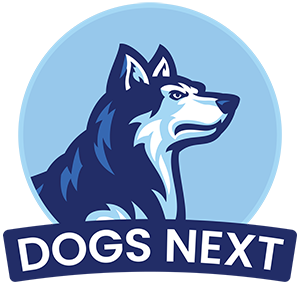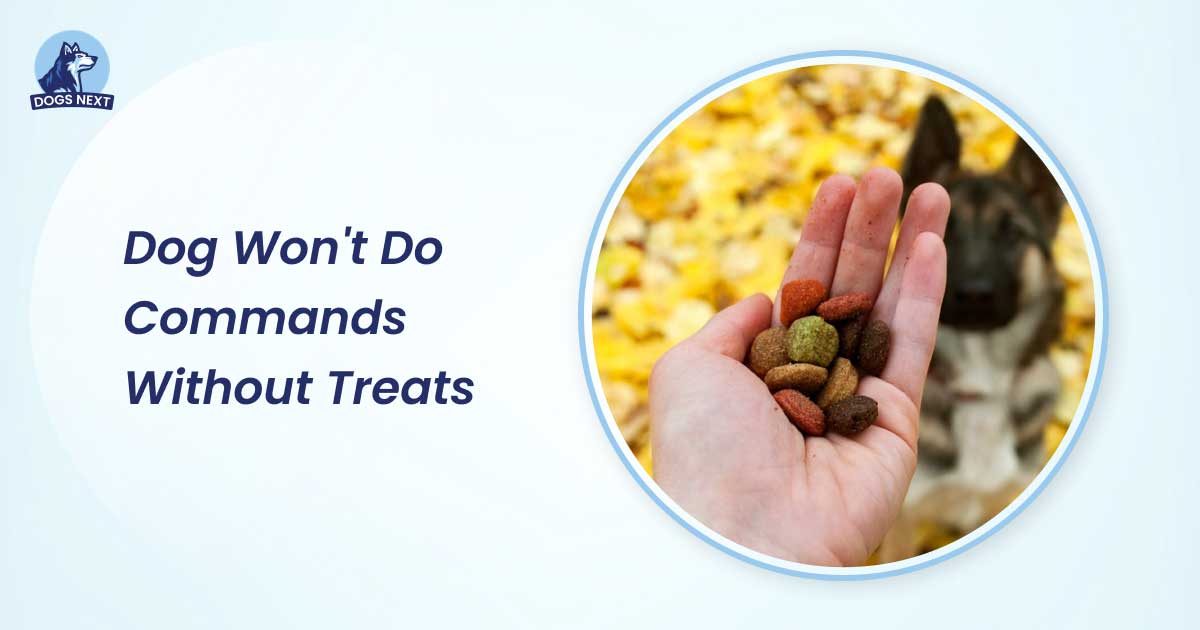Your dog won’t do commands without treats. This can be a common issue for many dog owners.
Training your dog to follow commands without treats can seem challenging. Dogs often respond well to positive reinforcement, like treats. But relying too much on treats can create dependency. It’s important to know why this happens and how to change it.
Understanding the root cause can help in finding effective solutions. You can teach your dog to obey commands without always expecting a treat. This will make your training sessions more productive and enjoyable. Let’s explore why dogs become treat-dependent and how you can train them differently.
Gradually Reducing Treat Dependency
Does your dog ignore commands without treats? You’re not alone. Many dogs rely heavily on treats for motivation during training. While treats are effective, they can create dependency. To foster better obedience and reduce treat dependency, gradually transitioning away from treats is essential. This process involves several steps to ensure your dog remains motivated and responsive.
Start By Using Treats Intermittently During Training
Begin by using treats intermittently. Instead of giving a treat every time your dog obeys, offer treats occasionally. This will help your dog learn that while treats are a possibility, they are not guaranteed. It helps to keep your dog guessing and more engaged in the training process.
Try these steps:
- Give a treat every second or third time your dog obeys.
- Mix up the timing to keep it unpredictable.
- Use a clicker or verbal cue to mark correct behavior.
Here’s a sample schedule:
| Day | Treat Frequency |
| 1-3 | Every second command |
| 4-7 | Every third command |
| 8+ | Random commands |
By using treats less frequently, your dog will start to understand that obedience itself is rewarding, not just the treat.
Gradually Replace Treats With Praise Or Toys
As you phase out treats training, replace them with praise or toys. Dogs love attention and playtime just as much as treats. Start incorporating verbal praise, petting, or a favorite toy into your training sessions.
Consider these tips:
- Use enthusiastic praise like “Good job!” or “Well done!”
- Pet your dog affectionately to reinforce good behavior.
- Introduce a favorite toy as a reward.
Here’s a comparison of rewards:
| Reward Type | Benefit |
| Verbal Praise | Immediate and consistent |
| Petting | Strengthens bond |
| Toys | Engaging and fun |
By using these alternatives, you reinforce that good behavior is always met with a positive outcome, even without treats.
Slowly Wean Off Treats While Still Rewarding Obedience
To successfully reduce treat dependency, slowly wean off treats while still ensuring your dog feels rewarded. Continue to offer treats sporadically but increasingly rely on other forms of rewards.
Steps to follow:
- Offer treats for complex commands only.
- Use praise or toys for simple commands.
- Gradually extend the time between treat rewards.
Here’s an example plan:
| Week | Reward Strategy |
| 1-2 | Treats for every third command, praise for others |
| 3-4 | Treats for complex commands, toys or praise for simple |
| 5+ | Random treat rewards, mostly praise and toys |
By following this plan, you ensure your dog remains motivated and obedient, even without the constant use of treats.
Using Different Types Of Rewards
Training your dog can be a fun and rewarding experience, but what if your dog won’t do commands without treats? Using different types of rewards can help. This not only diversifies the training process but also makes your dog less dependent on treats. Below, we explore various reward alternatives for dogs to ensure a balanced and effective training routine.
Switch To Rewarding With Affection Or Verbal Praise
One effective way to reinforce training is to switch to rewarding with affection or verbal praise. Dogs love attention from their owners. Using praise training methods can build a strong bond between you and your pet. Here are some tips:
- Verbal rewards: Use a happy, enthusiastic tone to praise your dog. Words like “good boy” or “well done” can make a huge difference.
- Physical affection: Petting, belly rubs, or even a gentle pat on the head are great ways to show your dog you are pleased.
- Consistency: Always use the same words and gestures to reinforce the behavior. Consistency helps your dog understand what they did right.
Using verbal reward techniques and affection not only makes training sessions more personal but also helps your dog feel loved and appreciated. This method works well for dogs who crave attention and enjoy being close to their owners.
Offer A Favorite Toy As An Alternative Reward
Another great reward alternative for dogs is using their favorite toy. Toy-based rewards can be just as effective as treats and add an element of fun to the training process. Here are some strategies:
- Identify the favorite toy: Find out which toy your dog loves the most. It could be a squeaky toy, a ball, or a chew toy.
- Incorporate playtime: Use the toy as a reward by engaging in a short play session after your dog follows a command.
- Rotate toys: Keep things interesting by rotating different toys. This prevents your dog from getting bored.
Implementing toy-based rewards can make training sessions more dynamic and enjoyable. It also encourages your dog to stay active and mentally stimulated. Remember to keep the toy exclusive to training sessions to maintain its value as a reward.
Keep Commands Consistent To Reinforce Training
Consistency is key in any training regimen. Keeping commands consistent helps reinforce training and ensures your dog understands what is expected. Here are some ways to maintain consistency:
- Use the same words: Always use the same command words for specific actions. For example, “sit” should always mean sit.
- Consistent tone: Use the same tone of voice each time you give a command. This helps your dog recognize the command.
- Regular practice: Practice commands regularly to reinforce the behavior. Daily training sessions can be short but should be consistent.
Maintaining consistency in commands and training routines helps your dog learn faster and retain the training better. It also reduces confusion and ensures that your dog knows exactly what is expected. By keeping commands consistent, you create a stable and reliable training environment.
Making Training Sessions Fun And Engaging
Does your dog only obey commands when treats are involved? You’re not alone. Many dog owners face this challenge. One effective solution is to make training sessions fun and engaging. By incorporating games and interactive exercises, you can keep your dog motivated without relying solely on treats.
Incorporate Commands Into Games And Play
One way to make engaging training sessions is by incorporating commands into games and play. Dogs love to play, and using this natural behavior can make training more enjoyable. Here are a few ideas:
- Fetch with Commands: While playing fetch, ask your dog to sit before you throw the ball. This reinforces the sit command in a fun environment.
- Hide and Seek: Hide treats or toys around the house and use commands like “find it” to make the game interactive.
- Tug-of-War with Rules: Play tug-of-war, but incorporate commands like “drop it” or “leave it” to teach control.
Using games for training helps in several ways. It keeps your dog physically active, mentally stimulated, and improves their obedience. Plus, it strengthens the bond between you and your dog. Remember, the key is to make the training feel like playtime.
Use Interactive Exercises That Stimulate The Dog
Interactive dog training exercises are another great way to keep your dog engaged. These exercises not only train your dog but also stimulate their mind. Here are some interactive exercises to try:
- Obstacle Courses: Set up an obstacle course in your yard or home. Use commands to guide your dog through it.
- Puzzle Toys: Invest in puzzle toys that challenge your dog’s problem-solving skills. These toys can include commands like “wait” or “take it.”
- Clicker Training: Use a clicker to mark desired behaviors, followed by a command. This method is effective and engaging.
Interactive exercises make training sessions exciting and mentally stimulating. They keep your dog focused and eager to learn. This approach helps in building a well-rounded, obedient dog.
Keep Training Short And Enjoyable
To ensure fun command training, keep sessions short and enjoyable. Long training sessions can become tedious for your dog. Here are some tips:
- Short Sessions: Aim for 5-10 minute sessions. This keeps your dog attentive and prevents boredom.
- Positive Reinforcement: Use praise, petting, or play as rewards. This makes training enjoyable without over-reliance on treats.
- Variety: Mix up the commands and activities. This keeps your dog interested and engaged.
Short, enjoyable training sessions are more effective. They keep your dog’s attention and make learning fun. Remember, the goal is to create a positive experience for your dog.
Frequently Asked Questions
Why Won’t My Dog Obey Commands?
Your dog may not obey commands without treats due to lack of motivation. Using treats can reinforce positive behavior and make training more effective. Over time, gradually reduce the treats to ensure your dog obeys commands without them.
How Can I Train My Dog Without Treats?
Train your dog by using positive reinforcement such as praise, toys, or playtime. Consistency and patience are key. Gradually phase out treats while increasing other rewards. This helps your dog learn to obey commands without relying solely on treats.
What Are Alternatives To Treats In Dog Training?
Alternatives to treats include verbal praise, petting, and playing with your dog. Use toys or favorite activities as rewards. These alternatives can effectively motivate your dog during training sessions and help reduce dependency on treats.
Is It Normal For Dogs To Need Treats?
Yes, it’s normal for dogs to need treats during training. Treats help reinforce desired behaviors and make learning enjoyable. Over time, you can reduce the reliance on treats by incorporating other rewards like praise or play.
Conclusion
Training your dog without treats is possible. Patience is key. Consistent practice helps. Use positive reinforcement methods. Praise your dog often. Show love and affection. This builds trust. Reward with toys or playtime. Gradually reduce treat reliance. Be patient and persistent.
Dogs respond to kindness. Enjoy the journey. Happy training!

I’m David, an expert contributor and writer, with two furry friends of my own, I know the challenges of raising and caring for dogs. From training to nutrition and health, my goal is to provide valuable insights and advice to help create strong bonds and happy, healthy lives. Find me in Twitter.




